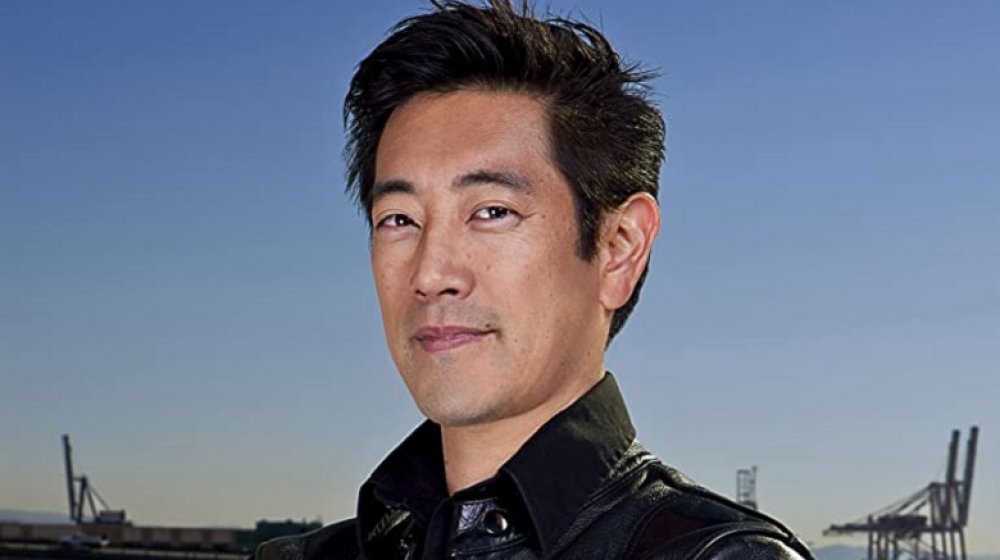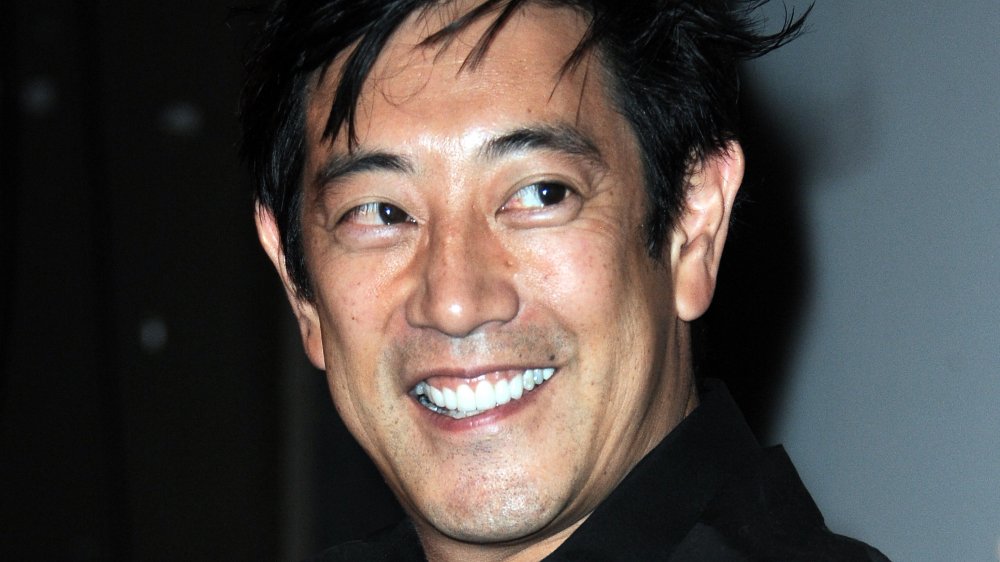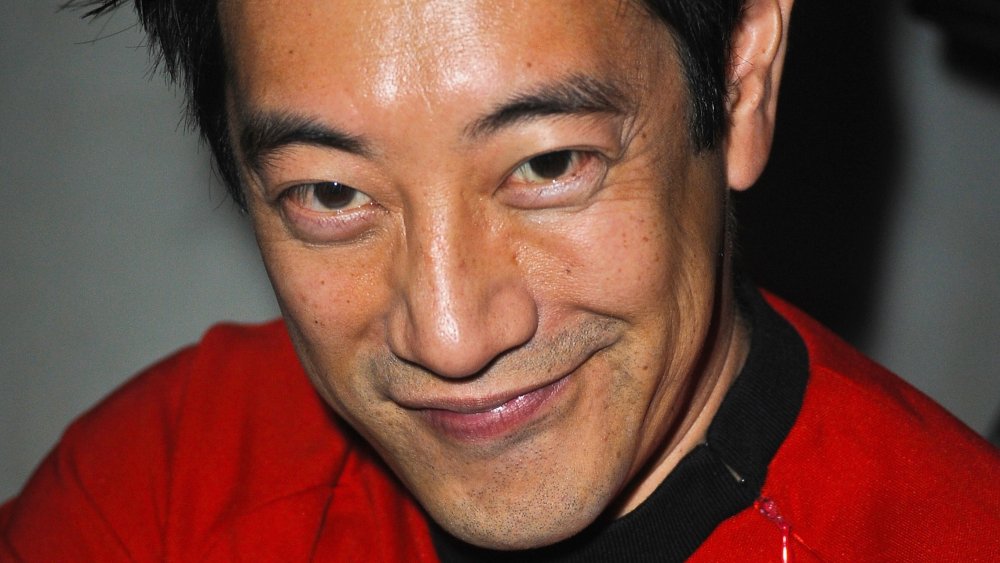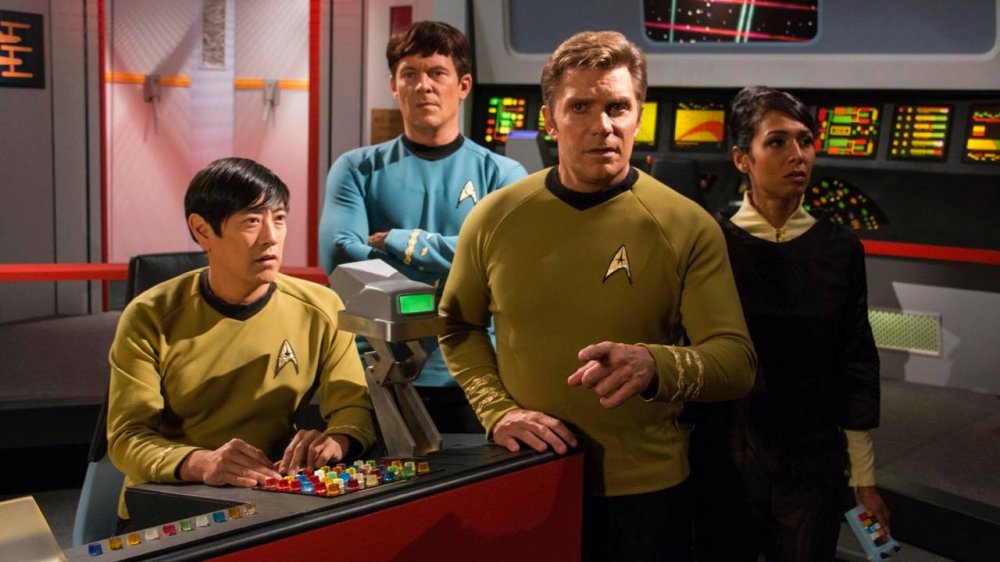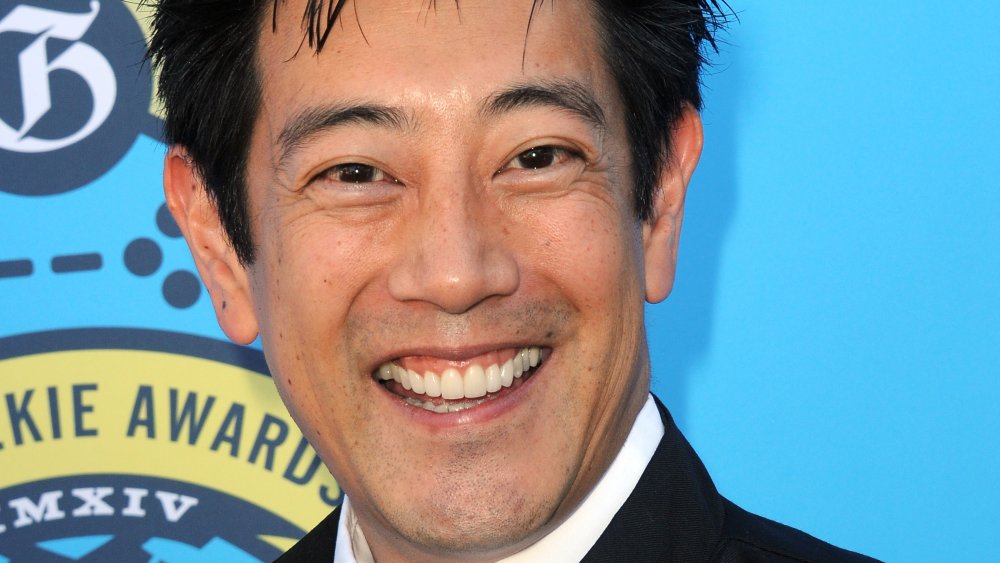What You Never Knew About MythBusters' Grant Imahara
The entertainment world was recently shocked and saddened by the unexpected death of Grant Imahara, who died suddenly at the age of 49 on July 13, 2020. Best known for his long tenure as part of the Build Team on the popular Discovery reality series MythBusters, the engineering and robotics expert joined the series during its third season in 2005. Along with co-hosts Adam Savage and Jamie Hyneman, Imahara and his cohorts Kari Byron and Tory Belleci were responsible for building the robots, devices, and other various apparatuses needed to prove or (more often) disprove the myths suggested by the show's audience.
With the rest of the Build Team, Imahara departed MythBusters in 2014, after having made his face a familiar presence in viewers' homes for the better part of a decade. Fans know that Imahara was skilled, skeptical, super-enthusiastic, and often sardonically funny — but there were some sides to Imahara that people seldom got to see on television. Here are a few things you may not have known about the Build Team's ultra-geek, one of the smartest people in pretty much any room he was ever in, and one cool dude — MythBusters' Grant Imahara.
Grant Imahara almost became a screenwriter instead of an engineer
Grant Imahara graduated from the University of Southern California with a degree in electrical engineering, which shouldn't come as too much of a surprise. What is surprising, though, is that despite his obvious and prodigious talent in that field, he came close to switching majors. In a 2007 interview with Joe-Mammy, Imahara revealed that he had always had an affinity for creative writing — and that he nearly abandoned his engineering pursuits to take a crack at becoming a screenwriter.
"I was in my sophomore year of studying engineering at USC," Imahara remembered. "One day — I'd been taking a lot of units and [was] under a lot stress — and I finally just decided engineering [wasn't] for me. I decided that I'm going to take this step for myself and say, 'You know what, I've got try something else'... As a part of this process of discovery I decided that the screenwriting would be something I would be interested in, so I went to USC's cinema school."
Upon enrolling in that school (formerly the USC School of Cinema-Television and now the USC School of Cinematic Arts), Imahara's future was sealed when he met one of its professors: Tom Holman, the inventor of the THX sound system used in movie theaters all over the world. Imahara spent some time working closely with Holman on some of the latter's pet projects, which prompted a realization in the young man that he could basically have the best of both worlds by a working electrical engineer in Hollywood. Imahara soon re-enrolled in his engineering classes, and after graduation, Holman offered him a job — at Lucasfilm's THX division.
Grant Imahara has worked on a bunch of your favorite movies
Imahara's engineering expertise soon led to a switch in divisions: to Industrial Light and Magic, Lucasfilm's venerable special effects house. He spent nine years at ILM helping to make movie magic — and, as it turns out, you've almost certainly seen the fruits of his labor onscreen. Imahara's title at ILM was Chief Model Maker, specializing in animatronics; in that capacity, he worked on some of the biggest films of the late '90s and early '00s (via The Hollywood Reporter).
Imahara's work can be seen in all three of the Star Wars prequels. He was in charge of rehabbing the original series' R2-D2 droids, and he even operated them on screen (via New York Times). Additionally, Imahara contributed effects work to flicks like The Lost World: Jurassic Park, A.I. Artificial Intelligence, Terminator 3: Rise of the Machines, The Matrix Reloaded, The Matrix Revolutions, xXx: State of the Union, Galaxy Quest, and Van Helsing.
Around this same time, Imahara built a robot — that he christened "Deadblow" — which became a champion on the Comedy Central robot rumble series BattleBots. After the winning season, he wrote a book entitled Kickin' Bot: An Illustrated Guide to Building Combat Robots, which you probably didn't know existed but need to have on your bookshelf right now. In 2005, Imahara's old ILM co-worker Belecci invited him to join MythBusters, and the rest is history.
But Imahara wasn't done living out his Hollywood dreams, nor was he finished innovating in the engineering field.
Grant Imahara starred on a Star Trek fan series
Imahara was a bit of a Trekkie, and he didn't limit his fandom to viewing marathons and attending conventions. In 2013, he was cast on the web fan series Star Trek Continues, which began with the premise that the original crew of the USS Enterprise never finished their five-year mission. The series positioned itself as a direct continuation of the original — and from its look to its writing to its production and sound design, it pretty much nailed the classic show's entire aesthetic.
On Star Trek Continues, Imahara played Hikaru Sulu, the role originated by the beloved George Takei. Also among the cast were series creator and veteran voice actor Vic Mignogna as James T. Kirk, and his frequent collaborator Todd Haberkorn as Spock. Joining them as chief engineer Montgomery Scott was Chris Doohan — the son of James Doohan, who played the role on the original Star Trek series and in seven feature films.
A slew of Trek alumni — including Michael Dorn (who played Commander Worf on Star Trek: The Next Generation), Marina Sirtis (who portrayed Counselor Deanna Troi on TNG), and John DeLancie (who played the godlike, omnipotent Q on multiple Trek series) — made guest appearances, which lent to the series' air of authenticity. Star Trek Continues has been called the closest thing to the original series of any fan-produced work.
Grant Imahara's legacy of electronics innovation will live on at Disney Parks
Imahara may be gone too soon, but his legacy is secure. He left behind a ton of amazing film and television work, and for one of his final major projects, he contributed to the development of a new kind of animatronic that will soon be helping to bring the fantastic to life at Disney theme parks all over the world.
Imahara was one of the listed authors on a 2018 Disney-published research paper entitled "Stickman: Towards a Human Scale Acrobatic Robot," which described "a simple two degree of freedom robot that uses a gravity-driven pendulum launch and produces a variety of somersaulting stunts." Disney Imagineers are using the technology presented in this paper to create animatronics that — unlike traditional models — can move autonomously, perform complex tumbling motions, and "stick" the landing every time, hence the "Stickman" name.
As this tech is refined, we will begin seeing these robots featured in new attractions, stunt shows, and rides. When we do, we'll know that Imahara's talent, tenacity, and know-how helped to make it possible. The man himself will be missed — but, like all those whose life is spent in constant pursuit of innovation, his legacy will live on.
